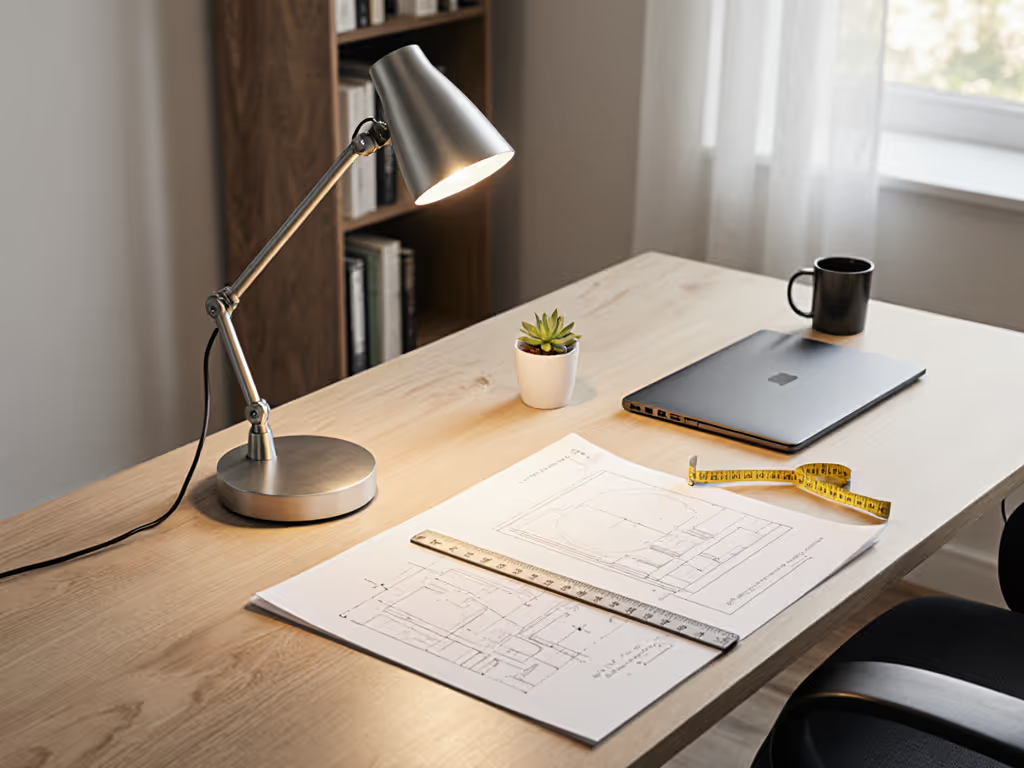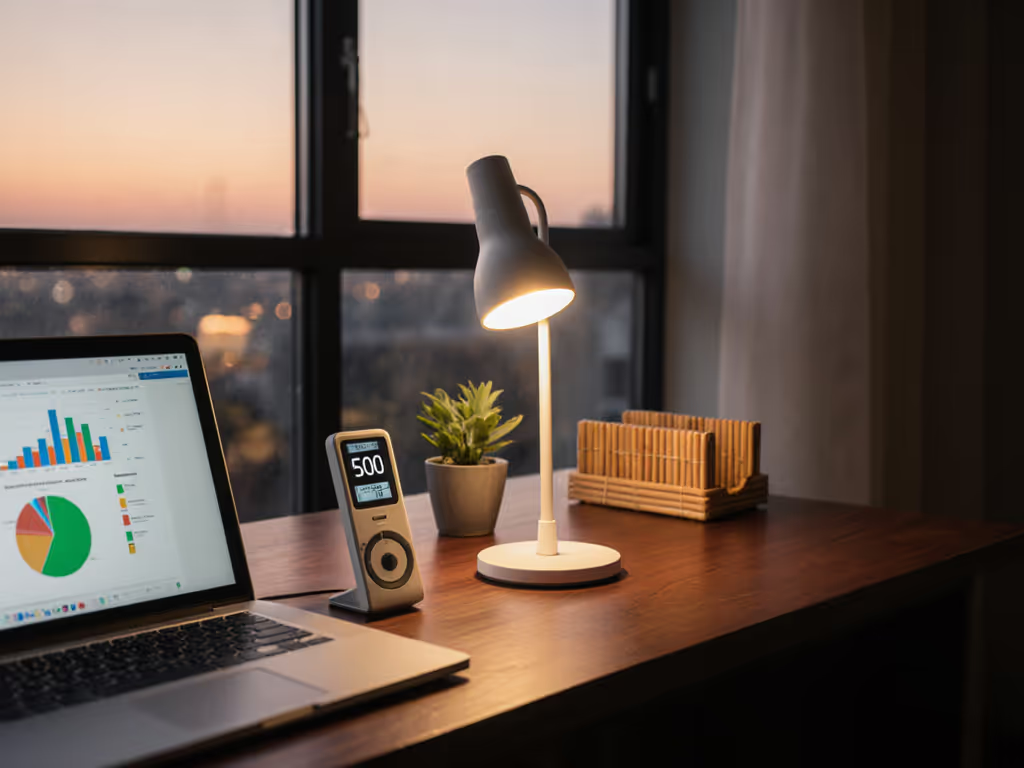
Desk Lamp Materials: Choose for Long-Term Comfort
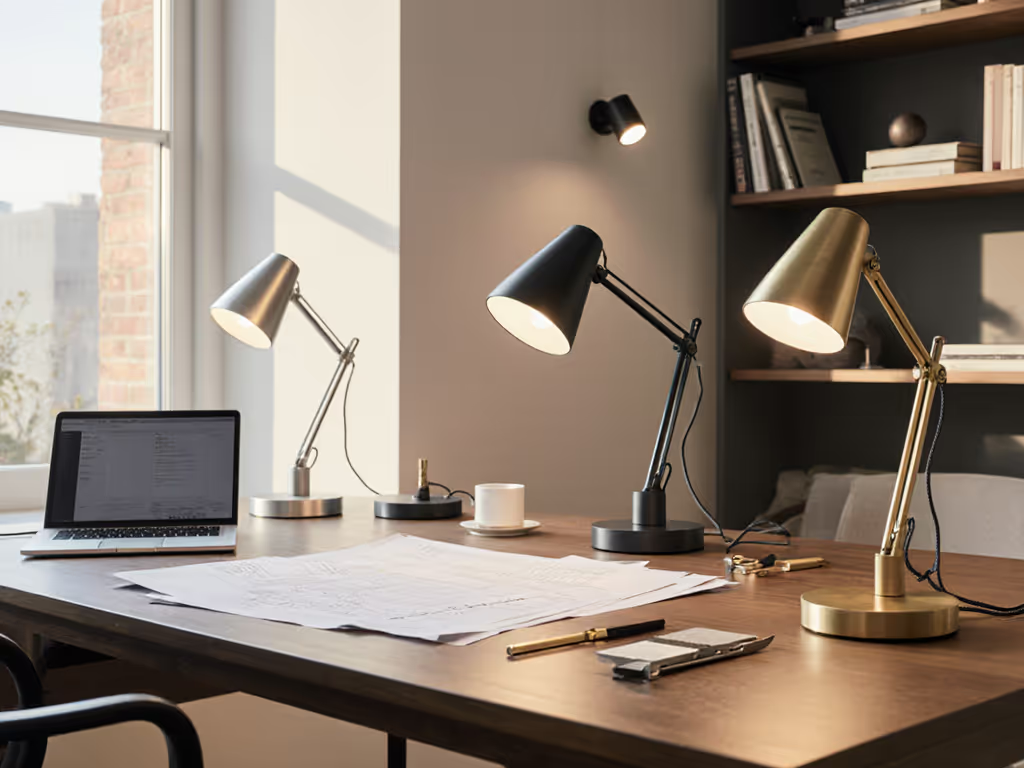
Choosing the right materials for your desk lamp directly impacts your long-term comfort, productivity, and eye health. Different lamp materials (metal, wood, plastic, ceramic, and eco-friendly alternatives) each offer distinct advantages in heat management, flicker reduction, glare control, and durability. Overlooking these factors can lead to eye strain, headaches, and premature lamp failure. Understanding these material properties helps you invest in lighting that supports extended work sessions without discomfort.
How Do Lamp Materials Influence Long-Term Comfort and Eye Health?
Material choice affects three critical comfort factors: heat dissipation, stability, and light diffusion. Metals like aluminum disperse heat up to four times faster than other materials[1], preventing LED degradation and flicker, common triggers for eye strain and migraines. Glass shades diffuse light effectively, reducing glare by up to 60%[1], while sturdy bases (like ceramic or weighted metal) prevent wobble during adjustments. For precision tasks, stable materials maintain consistent beam angles, avoiding shadow shifts that force neck strain.
Flicker starts at the heatsink: metals like aluminum or zinc alloy manage driver heat best, keeping LEDs below their critical temperature threshold. When I logged my own headaches, I found PWM flicker vanished once I switched to a metal-base lamp with proper thermal design (error rates dropped within a week).
Metal Desk Lamps: Durable Workhorses or Heavy Heaters?
Advantages: Metal lamps excel in durability, often lasting 15+ years due to robust aluminum or zinc alloy construction[1][4]. Their superior heat dissipation maintains stable LED output, critical for flicker-free operation during long sessions. Adjustable metal arms hold positions rigidly, ideal for precise beam targeting[2][8].
Drawbacks: Weight ranges from 2 to 5 kg[1], limiting portability. In humid environments, untreated steel may rust without powder-coated protection[3]. Premium models (e.g., high-purity alloys) cost $50 to $200 but justify this with 30,000+ hour lifespans[2].
For task-specific stability, metal's thermal performance wins. Flicker metrics, not vibes.
Wooden Lamp Bases: Natural Warmth vs. Practical Care
Advantages: Wood offers aesthetic warmth and decent vibration damping. Sustainably sourced bamboo or maple provides an eco-friendly option that pairs well with home offices[5][8].
Maintenance Needs: Wood requires periodic polishing to prevent drying or warping. Avoid placing near heat sources (sustained temperatures above 45°C can cause cracking[5]). Opt for oil-finished hardwoods over veneers for longevity.
Ergonomic Fit: Wooden bases suit low-heat LED fixtures but lack metal's thermal efficiency for high-lumen tasks.
Plastic Lamps: Affordable but How Long-Lasting?
Pros: Lightweight (under 1 kg) and budget-friendly ($10 to $50), plastics like ABS resist impact 5× better than glass[1][5]. Molded designs enable ergonomic shapes for cramped desks.
Cons: Exposure to heat or UV degrades plastic. At sustained 60°C+, lifespan halves[1][3], leading to brittleness and yellowed diffusers. Avoid high-wattage bulbs or sunny placements.
Glass/Ceramic: Elegant but Fragile
Glass shades diffuse light softly, reducing screen glare, but break 10× easier than metal[1]. Ceramic bases withstand 1000°C heat[1] but weigh 3 to 6 kg and chip easily. Both suit low-traffic areas but risk instability on crowded desks.
Eco-Friendly Materials: Sustainable Comfort?
Recycled metals, bamboo, or bioplastics offer lower carbon footprints. Bamboo's natural grain masks minor wear, aging gracefully. Verify third-party certifications (e.g., FSC, Cradle to Cradle) for genuine sustainability claims[5][8]. For energy savings and sustainable picks, see our eco-friendly desk lamps.
Actionable Next Step
Audit your workspace:
- Measure desk space: Allow 30 cm clearance for lamp articulation.
- Note tasks: Detailed work (e.g., drafting) demands metal's heat management; casual use accommodates wood or eco-materials.
- Check existing issues: If flicker or glare troubles you, prioritize metal bases and matte-finished shades.
Material choice is engineering for comfort: match properties to your work, environment, and physiology for fatigue-free illumination.
Related Articles

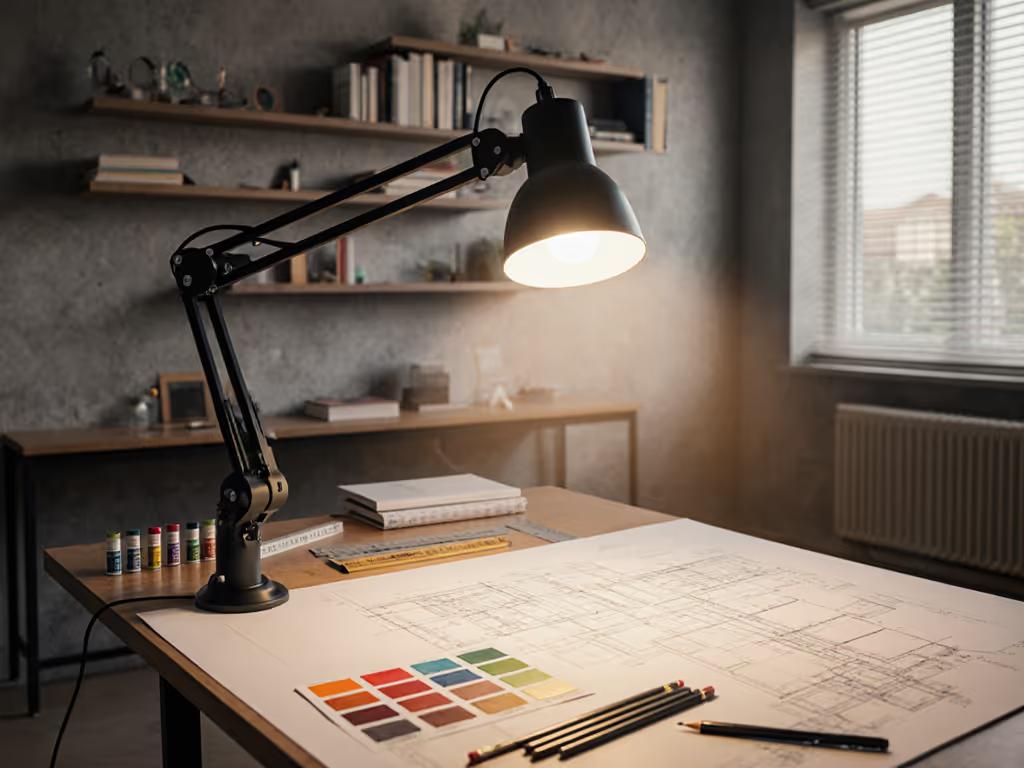
Artist & Student Task Lamps: Fix Glare, Boost Color Accuracy
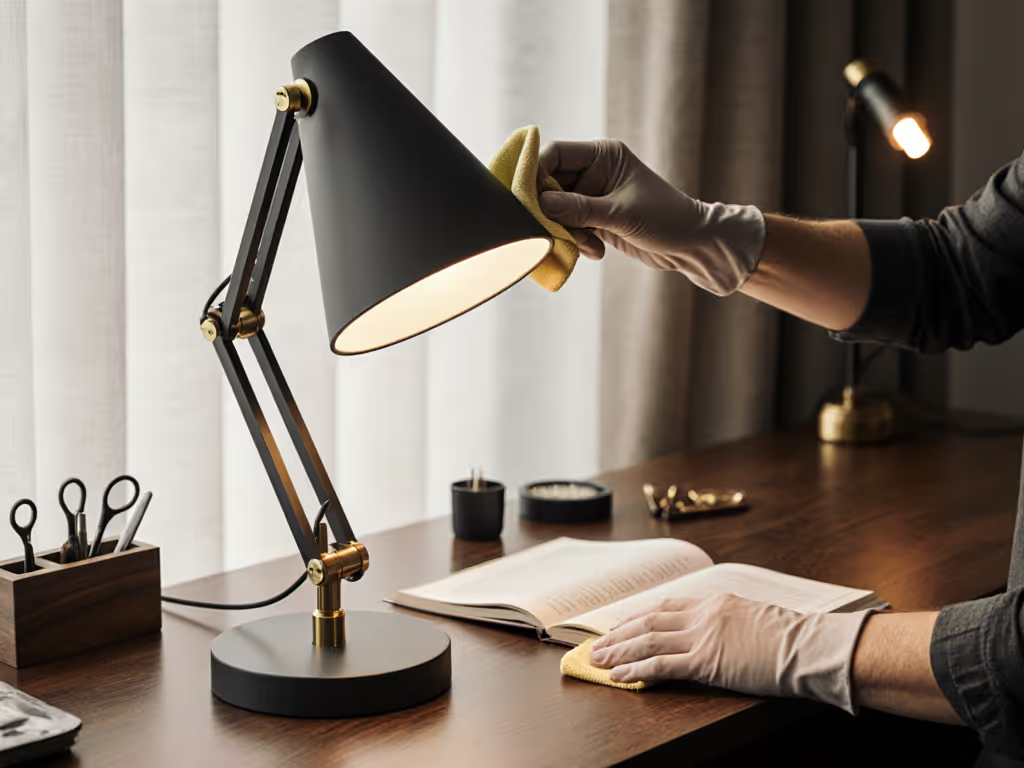
Desk Lamp Maintenance: Proven Care Guide for Longevity
